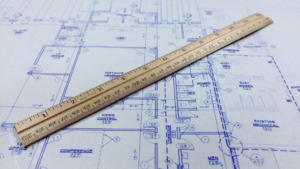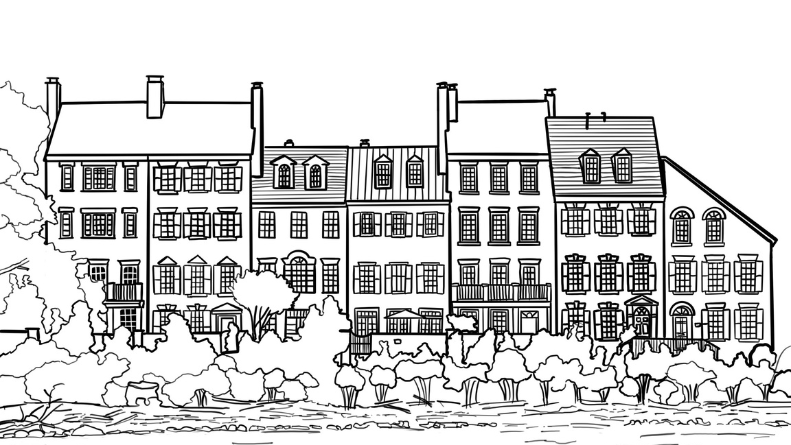The Art of Well-Being in Home Design
Imagine walking into a place that’s more than just four walls and a roof. Picture a space that doesn’t only store your physical possessions but actively contributes to your well-being with every moment you spend there. In the whirlwind of today’s life, the definition of a home has significantly evolved. It has transcended its traditional role as a mere shelter to become a nurturing haven that actively supports both our physical and mental health. But, amidst the hustle and bustle of modern living in the UK, one might wonder, how can we transform this ideal into a tangible reality? How do we create environments that not only shelter us but also enhance our quality of life? This is where the importance of home design comes in.
Defining a Healthy Home
In the bustling cities and quiet countryside of the UK, a healthy home represents more than just its structural integrity. It’s a sanctuary where the air you breathe is clean and pure, the sunlight that streams through the window lifts your spirits, and every material around you is chosen with your safety and well-being in mind. Such a home is not merely a place of residence but a dynamic force for good, actively contributing to your health and happiness.
A Journey Through Time: Evolution of Home Design
Let’s take a moment to journey back in time. Picture the dark, cramped corridors of the Victorian era, a time when the concept of well-being was hardly a consideration in home design. Fast forward to today, and we witness a dramatic transformation. The modern home is designed with green spaces, ample airflow, and natural light as fundamental elements. This shift is profound, marking a significant change in how we view and prioritize our living spaces. It reflects a growing recognition of the crucial role that our environment plays in our overall well-being.
Challenges and Innovations in Modern Home Design

Conquering Urban Constraints
Urban living comes with its own unique set of challenges. The dense population, the limited space, and the constant hum of city life can sometimes feel overwhelming. However, it’s precisely these constraints that have sparked a wave of innovation in home design. Architects and designers are now finding creative ways to bring the principles of well-being into even the smallest of urban spaces, turning potential obstacles into opportunities for innovative solutions.
The Foundation of a Well-Being Centric Home
Imagine a home where every element is designed with your well-being in mind. From the warmth of natural light filling every corner to the breath of fresh air that greets you as you step inside—this is the foundation of a well-being-centric home. Such spaces are crafted to ensure that well-being is not an afterthought but a core principle that is woven into every aspect of the home’s design. It’s about creating environments that do more than just look good—they make you feel good, too.
The Impact of Design on Mental Health
Never underestimate the power of your surroundings on your mental state. The design of our homes can either be a source of stress or a sanctuary from it. A well-thought-out home, designed with an emphasis on tranquillity and peace, can serve as a protective barrier against the chaos of the outside world. It’s about creating spaces that don’t just shelter our bodies but also nurture our minds.
The Power of Personal Space
The significance of personalization in our homes cannot be overstated. It’s the unique touches, the items that carry personal significance, that transform a mere building into a warm, welcoming home. This personal space becomes a reflection of who we are at our core, offering comfort and familiarity in an ever-changing world. When our homes mirror our inner selves, they become more than just places to live—they become extensions of our identities, providing solace and joy in everyday life.
The Role of Ergonomics in Home Design
Ergonomics extends its principles far beyond the confines of office chairs and desks; it’s an essential component of home design. This discipline is about creating environments that support and enhance our physical well-being, making every action and movement within our homes an act of kindness towards our bodies. From the way furniture is arranged to the height of countertops and the design of living spaces, ergonomics in home design is about ensuring that our daily interactions within these spaces promote health and prevent strain or injury. It’s a thoughtful consideration of how we live in our homes and how our homes can be tailored to support a healthy lifestyle.
Emphasizing Fitness and Accessibility
Creating a home that evolves with our changing needs is crucial. Whether it’s accommodating the boundless energy of children, the dynamic lifestyles of adults, or the comfort requirements of older family members, accessibility and fitness spaces within a home ensure that it’s a place where health is nurtured. This approach to design considers wider doorways for easier access, floors that reduce the risk of slips, and spaces specifically designed for physical activity. It’s about foreseeing the future and crafting a home that stands as a supportive environment for every phase of life, ensuring that everyone, regardless of age or physical ability, can enjoy a high quality of life within their own home.

The Health Benefits of Green Living
Adopting sustainable practices within our homes goes beyond the act of environmental conservation; it’s a commitment to a healthier lifestyle. Each choice we make towards sustainability—from the energy we consume to the materials we choose for our homes—has a profound impact on our health. Living in a home that embraces green principles means cleaner air, reduced exposure to toxic materials, and a connection to the natural world that fosters peace and well-being. It’s an investment in a lifestyle that prioritizes health, ensuring that our personal environments contribute positively to our well-being.
Incorporating Sustainability into Everyday Life
Integrating eco-friendly practices into our daily lives begins at home. From installing solar panels to reduce our reliance on fossil fuels to choosing materials that are both sustainable and non-toxic, the green choices we make not only contribute to the health of our planet but also to our personal well-being. These decisions can transform our living spaces into bastions of health, offering environments that are not only safe but also conducive to a healthier way of living. It’s about making conscious choices that benefit both the earth and its inhabitants, creating a symbiotic relationship between our homes and the environment.
Innovations for a Healthier Tomorrow
The advent of smart home technology is revolutionizing the concept of a healthy home. With systems designed to monitor and adjust the quality of air, light, and even sound within our living spaces, technology is becoming an indispensable ally in our quest for health and well-being. These intelligent systems can learn from our habits and preferences, creating environments that not only meet our needs but also anticipate and adapt to them. It’s a bold new world where our homes not only shelter us but actively contribute to our health.
Finding Harmony Between Tech and Nature
The challenge and opportunity lie in harmonizing technological advancements with the natural elements of our homes. This balance ensures that our living spaces are not just efficient but also soulful. Integrating smart lighting that mimics the natural rhythm of daylight, using technology to enhance the growth of indoor plants, or employing advanced materials that clean the air are just a few ways this harmony can be achieved. It’s about creating homes that are not only intelligent but also deeply connected to the natural world, fostering spaces that nourish the soul as well as the body.
Conclusion
The environment we live in plays a crucial role in shaping our well-being, making the design of our homes a potent instrument in promoting health and happiness. Jamie Johnson, CEO of FJP Investment, captures the essence of this relationship, stating, “The spaces we inhabit have the power to transform our health and well-being. It’s not just about aesthetics; it’s about creating environments that nurture and sustain us.” Looking ahead, it’s evident that the homes of the future will seamlessly blend elements of well-being, sustainability, and technology. These won’t be mere luxuries but essential components of a healthy living space.
By designing homes that cater not only to our physical needs but also to our mental and emotional well-being, we are doing more than constructing buildings; we are creating sanctuaries for the soul. This evolution towards healthier living spaces represents more than an architectural trend; it is a profound shift in how we conceive of and interact with our most personal environments. It is a call to action to redefine what it means to be at home, turning our living spaces into sources of health, happiness, and well-being for everyone who enters them.
ARE YOU READY TO START INVESTING?
Subscribe to our mailing list now for exclusive deals, investment guides and the latest information from the property market.







